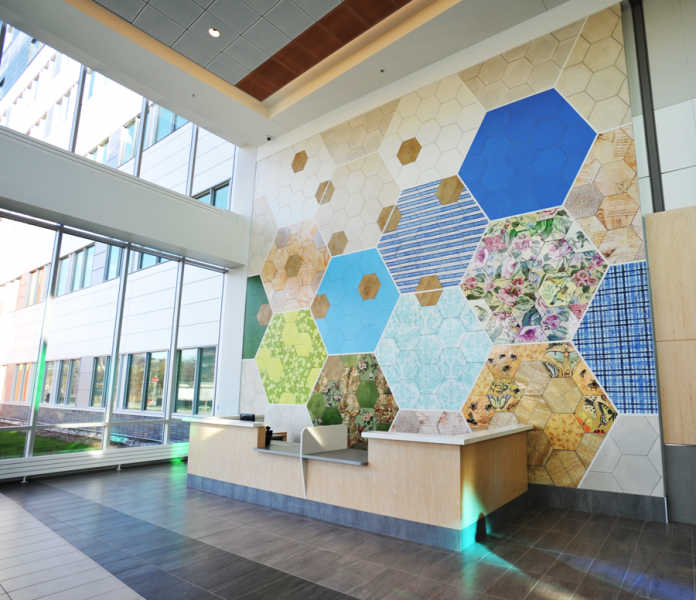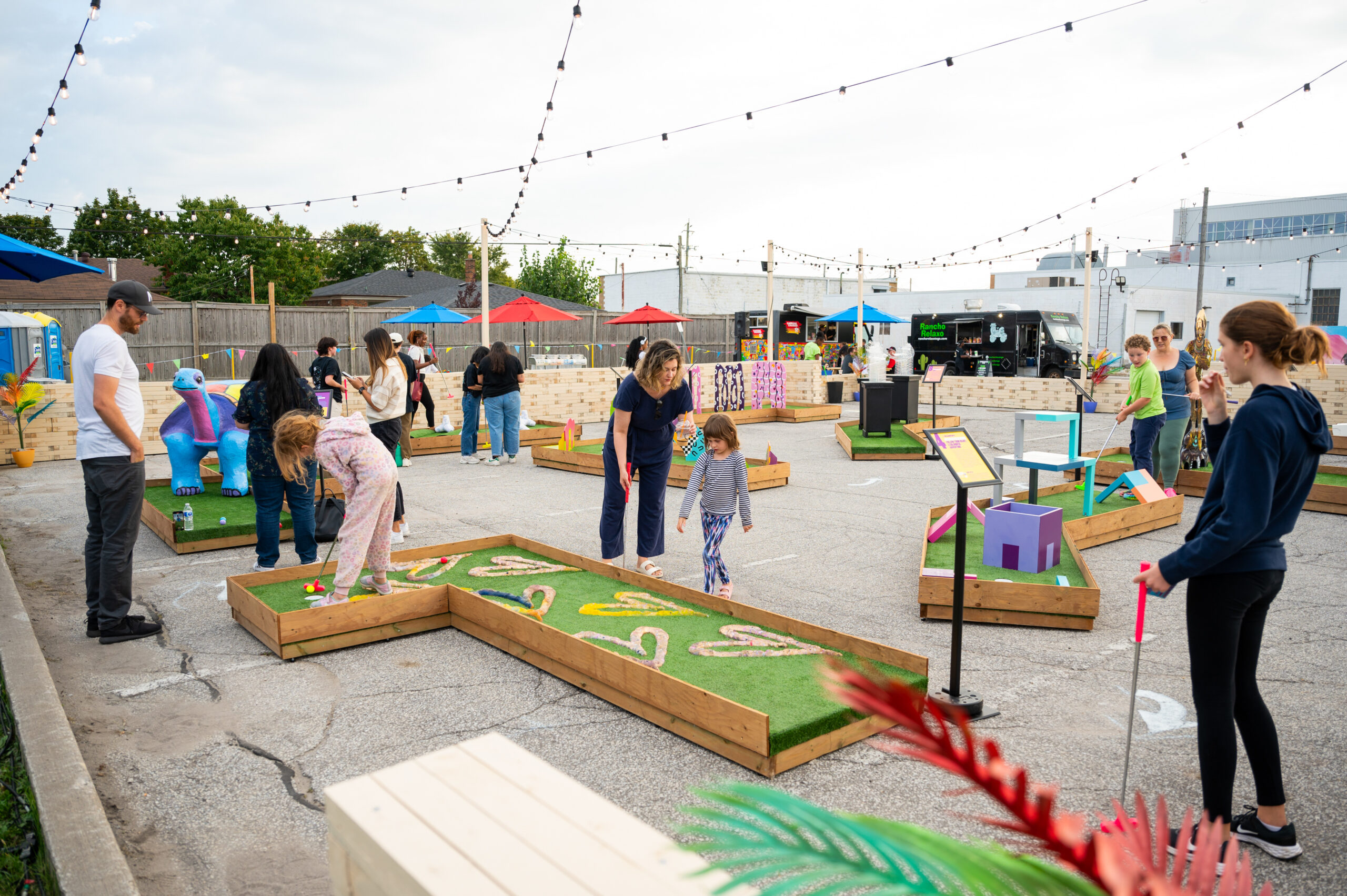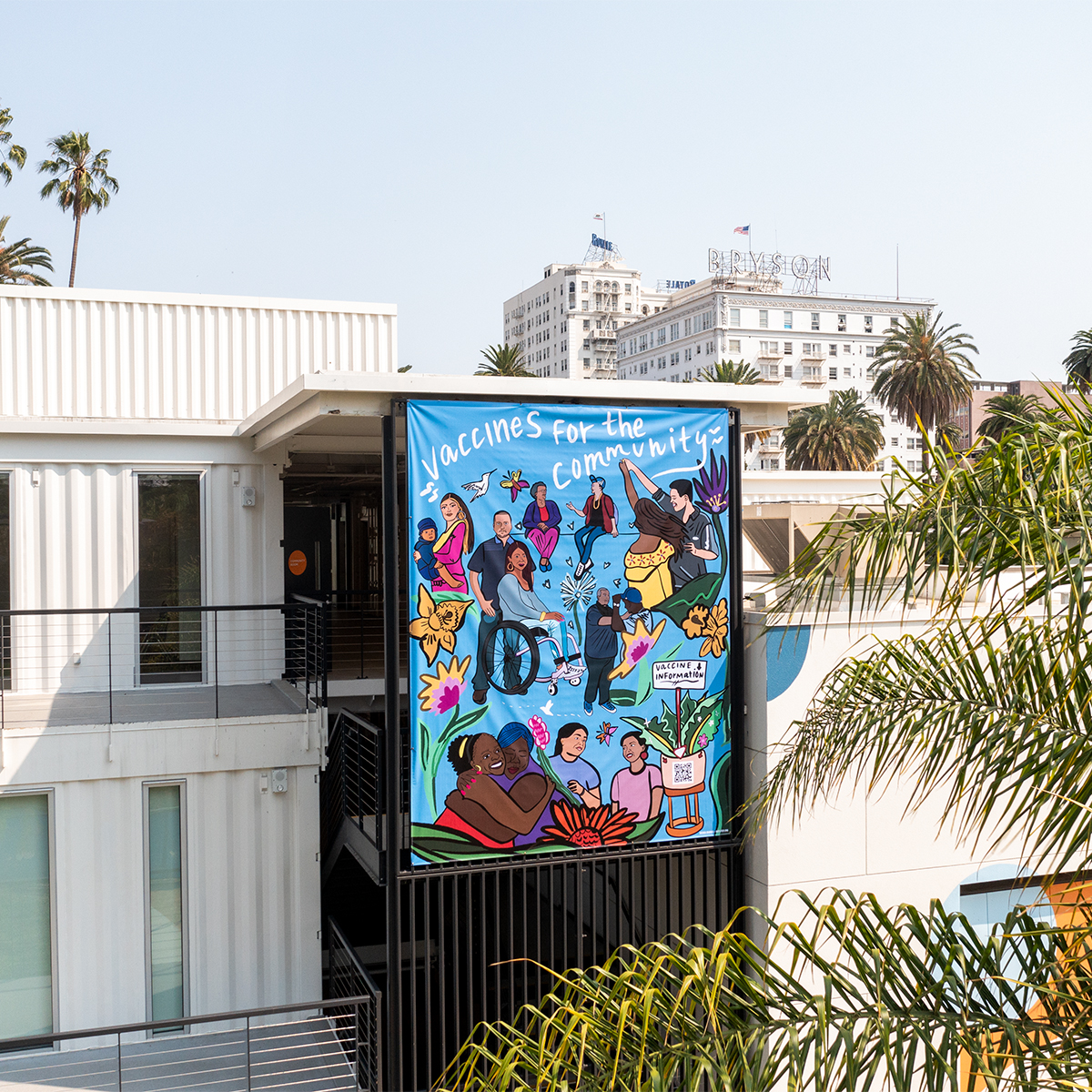Five Ways Public Art Promotes Public Health
From hospitals to public parks, how art can create healthier public spaces
Can art improve our well-being? In 2019, the World Health Organization’s Health Evidence Network produced a report analyzing art’s role in public health, linking investment in the arts to improved health outcomes. The report concluded with a set of policy recommendations aimed at supporting collaborative approaches between the artistic and medical sectors. But what would these policies look like in practice? From enriching hospital spaces to promoting pandemic awareness, public art initiatives have the potential to make tangible impacts on fitness, health, and mental wellness.
This feature is part of Fieldnotes, a public art blog series by STEPS that promotes inclusive and innovative public art through interviews, storytelling, case studies, and knowledge sharing.
1. Transforming Medical Space: Public Art in Hospitals
While public art is more frequently associated with outdoor sites, the indoor public spaces of hospitals and other medical facilities are often unutilized canvases—canvases in which artistic intervention can transform into welcoming sites of cultural vitality. Of course, placing art in clinical spaces is not just about taking advantage of an alternative public space. Researchers have discovered that the presence of art provides measurable benefits to the wellness of patients, from alleviating stress and anxiety levels to improving patient mood and satisfaction. Many patients and their family members spend some of the most difficult and uncomfortable moments of their lives waiting in hospital rooms, and art can provide both a positive distraction from stress and a connection to the world outside the hospital walls.

Installed in the McGill University Hospital Centre’s Glen site, Structura Habitata is a large-scale mosaic tessellated with hexagonal images of nature
Artist and photo credit: Shelley Miller
One leader in integrating art into medical spaces is the McGill University Hospital Centre (MUHC) in Montreal, which is home to one of the largest public collections of art in Quebec. The collection is displayed across all MUHC hospital sites, including permanent galleries and temporary exhibition areas, with pieces by iconic names like Pablo Picasso and Henri Matisse.
The Glen site hosts eleven public art installations, such as Structura Habitata by Shelley Miller, a tessellated wall mosaic depicting “the symmetry and order found in nature” with a hexagonal pattern inspired by honeycombs and molecular structure diagrams. The site also features Nicholas Baier‘s Lustre (hémoglobine), a stainless steel sculptural reproduction of the hemoglobin macromolecule. Through public art, the Art and Heritage Centre of the MUHC provides a healing environment for patients and healthcare professionals—where careful curation is integral to saving lives.
2. Painting Wellness: Public Art and Mental Health
Like other medical facilities, psychiatric spaces can benefit from the stress-reduction effects of art. At the Centre for Addiction and Mental Health (CAMH) in Toronto, the Therapeutic Art Project enriches the environments of two CAMH hospitals through structurally-integrated installations and standalone pieces.
Apart from activating more welcoming mental health spaces, public art can also engage audiences in conversations about their own mental well-being. Drawing upon the associations between colours and emotions, Jacquie Comrie’s pieces (such as Renaissance of Mother Gaia, a STEPS-facilitated mural in Toronto) provide spaces of mental rejuvenation and visual therapy through the language of colours.

The 55-foot-long ground mural Life Badges presents a colourful map of emotional struggles and milestones
Artist credit: Amanda Lederle
Photo Credit: Selina McCallum
Many artists also use their practice as an avenue for compassionate communication, asking passersby to stop for a moment and consider the struggles and supports in their own lives. In Amanda Lederle’s murals, support comes in the form of maps of experience and visualizations of personal journeys. Mental Health Seek and Find maps out mental health supports and affirms the hope and resilience of the viewer, while Life Badges encourages viewers to commemorate the emotional milestones of their lives.
3. Cultivating Park Life: Creative Placemaking for an Active Lifestyle
Hospitals aren’t the only spaces integral to public health; public parks, green spaces, and other sites of outdoor leisure and play all contribute to our shared wellness. Research from the World Health Organization has linked urban green spaces, such as parks and playgrounds, to improved health outcomes through stress alleviation.
For people without access to gyms or other indoor exercise facilities, these outdoor spaces also serve as key locations for physical activity, which is correlated with improved physical and mental health. However, many outdoor spaces aren’t the most inviting or accessible. Whether due to a lack of entertainment or infrastructure, many outdoor spaces in urban neighbourhoods fail to become part of the residents’ active lifestyle.
Community members come together in workshops at Toronto’s Thorncliffe Park to explore their connection with local green spaces
Video credit: Anushay Sheikh
Through creative placemaking, STEPS Public Art has explored the diverse potentials of art in activating attractive outdoor spaces for exercise and play. At Toronto’s Thorncliffe Park, STEPS facilitated Picture This, a functional sculpture that simultaneously serves as decoration, seating, and shade, acting as a place of rest and recuperation for park-goers. Across the country in Richmond, BC, Jeni Chen’s Tapestry of Hope (created as part of STEPS’ CreateSpace Public Art Residency) was a collaborative installation piece that invited residents to contemplate green space and decorate tree branches with their hopes.

Mini golf in action as part of community and placemaking activities by Northcrest Developments
Photo credit: Garcia Creative
Apart from enriching existing spaces, STEPS has also cultivated new locales of healthy activity. Tee Up Downsview was a pop-up mini golf course temporarily inhabiting a vacant space. The installation showcased the aesthetics of nine different artists to provide a novel experience of exercise and play for the local community. Public art isn’t limited to creating aesthetic beauty; it can also create engaging settings for a healthy lifestyle.
4. Spreading the Message, Stopping the Spread: Art and Public Health Literacy
In a time of widespread health misinformation, art can educate and promote medical literacy. The COVID-19 pandemic pushed the world into a collective public health emergency, the consequences of which we still experience to this day. Through the gamut of COVID-19 prevention protocols and vaccination efforts, one fact is clear: a healthy world requires collective awareness for collective action.

A vibrant banner advocating COVID-19 vaccination decorates a building facade, reminding passersby of the community that vaccines protect
Artist credit: Brenda Barrios
Photo credit: Facebook Open Art
While art is mostly associated with mood and emotional states, the public health sector can instrumentalize public art to raise awareness for the steps we need to take to protect ourselves and our communities. Operating from 2021 to 2022, the nonprofit media lab Amplifier’s Community Art Vaccination Program was a vibrant visual campaign to mobilize community members to receive their COVID-19 vaccinations. The project installed public art pieces in over a dozen cities, from Edmonton to Washington, DC, with a focus on neighbourhoods with relatively low vaccination rates.
Of course, COVID-19 prevention isn’t the only public health topic that can take advantage of artistic communication; public art provides an entertaining and culturally rich avenue for teaching us how to protect both ourselves and our loved ones.
5. Nurturing Social Connection: Community Art for Healthy Aging
Humans can cure physical diseases, but can we craft a loneliness cure? As people age, they often experience greater social isolation than their youthful counterparts, due to factors such as retirement from the workforce or loss of friends and family. The loneliness of aging is a matter of both body and mind; research links social isolation to a variety of health risks, including conditions such as high blood pressure and heart disease.
Community art programs are one way to fight the plague of social isolation by providing opportunities for vulnerable communities to cultivate healthy social connections. For the elderly, engaging in artistic creation also comes with the added benefit of reducing the risk of cognitive decline.
From coast to coast, public art initiatives can provide seniors with the resources to build community through the arts. Arts & Health: Healthy Aging Through the Arts is a project by the Vancouver Board of Parks and Recreation that works with professional artists to provide community arts programs that promote senior health and wellness. Their work engages seniors in a wide range of artistic mediums and lived experiences, from weaving projects with the Elders at the Tsleil-Waututh Nation to handmade puppet theatre made and performed by Cantonese speakers.
From Weeds We Grow participants celebrate the completion of the Seniors Flag Garden
Video credit: Anushay Sheikh
Artistic outreach to seniors can also be part of broader community engagement strategies, such as in From Weeds We Grow, a public art community project by STEPS in Toronto’s Rexdale neighbourhood. As part of the 2022 winter programming for North Etobicoke seniors, the project offered Weaving Our Roots, two reflection and illustration workshops led by Joaquin Varela which aimed to deepen connections to the land. The workshop participants produced a Community Flag Garden at the Rexdale Community Hub—an opportunity for local seniors to make a cultural mark on their neighbourhood
For healthy living, art can make a deep impact on the physical and the psychological—reducing health risks and alleviating stress. From community engagement to creative placemaking, public art strategies can build healthier communities one artist at a time.
About the Writer
Wenying Wu (she/her) is a student of English and Chinese literature beginning her MA in Comparative Literature at the University of Toronto in September of 2024. Her research interests include science fiction, body horror, and the representation of dreams. Wenying was the Cultural Content Writer at STEPS during the 2024 summer season.
Interested in bringing meaningful public art to your community? Contact us to get the conversation started.


